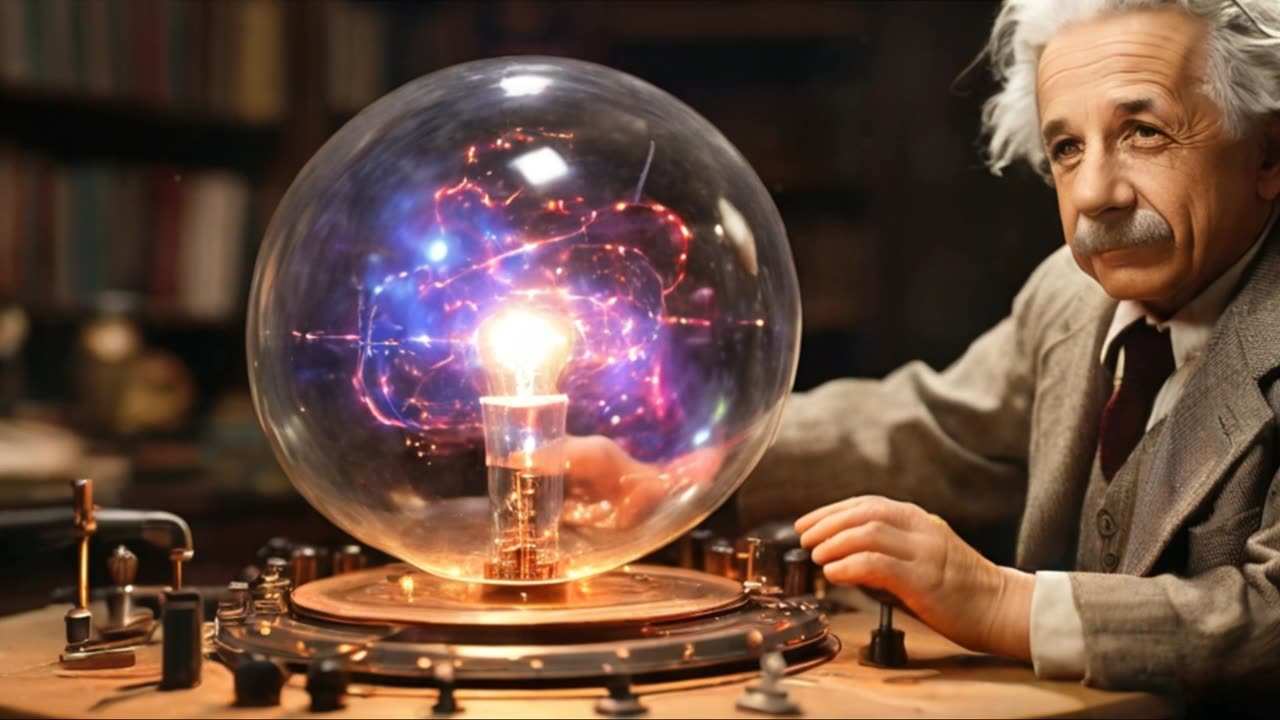Premium Only Content

Albert Einstein - The Man Behind Relativity Theory (1879 - 1955)
Albert Einstein (1879-1955) was a theoretical physicist renowned for his contributions to the development of modern physics, most notably the theory of relativity. Here is an exploration of Einstein's life and his groundbreaking work on the theory of relativity:
Early Life and Education:
Birth and Childhood:
Albert Einstein was born on March 14, 1879, in Ulm, in the Kingdom of Württemberg in the German Empire.
Education and Academic Struggles:
Einstein showed an early interest in mathematics and physics but faced challenges in the traditional school system. He later attended the Swiss Federal Institute of Technology (ETH Zurich).
Career and Scientific Contributions:
Annus Mirabilis Papers (1905):
In 1905, often referred to as Einstein's Annus Mirabilis (Year of Miracles), he published four groundbreaking papers that transformed physics. These papers covered the photoelectric effect, Brownian motion, special relativity, and mass-energy equivalence (E=mc²).
Special Theory of Relativity (1905):
Einstein's special theory of relativity introduced the revolutionary concept that time and space are intertwined and relative to the observer's motion.
General Theory of Relativity (1915):
Einstein extended his theory with the development of the general theory of relativity, proposing that gravity is not a force but a curvature of spacetime caused by mass and energy.
Einstein's Equation (Field Equations):
The general theory of relativity is encapsulated in Einstein's field equations, a set of ten interrelated differential equations.
Public Recognition and Nobel Prize:
Nobel Prize in Physics (1921):
Einstein was awarded the Nobel Prize in Physics in 1921 for his explanation of the photoelectric effect, a key aspect of quantum theory.
Einstein's Public Persona:
Einstein's iconic image became widely recognized, and he used his platform to advocate for pacifism, civil rights, and education.
Later Life and Exile:
Emigration to the United States:
Due to the rise of the Nazi regime in Germany, Einstein, who was of Jewish heritage, emigrated to the United States in 1933.
Atomic Bomb Letter (1939):
Einstein played a role in alerting the U.S. government to the potential development of atomic weapons by Nazi Germany, leading to the establishment of the Manhattan Project.
Legacy and Later Work:
Post-War Years:
After World War II, Einstein continued his scientific pursuits, working on unified field theory, although he did not achieve the breakthrough he sought.
Death and Immortality of Ideas:
Albert Einstein died on April 18, 1955, in Princeton, New Jersey. His ideas, particularly those related to relativity, continue to shape modern physics and have had profound implications for our understanding of the universe.
Cultural Impact:
Pop Culture Icon:
Einstein's disheveled appearance, unique fashion sense, and iconic equations have made him a symbol of genius in popular culture.
E=mc²:
Einstein's equation, E=mc², has become one of the most recognizable symbols in physics, representing the equivalence of energy (E) and mass (m) multiplied by the speed of light (c) squared.
Albert Einstein's contributions to physics, particularly his theories of relativity, revolutionized our understanding of the fundamental nature of space, time, and gravity. Beyond his scientific achievements, Einstein's advocacy for human rights and his status as a cultural icon have left an indelible mark on history.
-
 4:23:59
4:23:59
STARM1X16
12 hours agoSunday Night Duos
79.5K4 -
 1:02:11
1:02:11
The Dan Bongino Show
22 hours agoSunday Special with Vince Coglianese, Rep. Tim Burchett, Rep. Byron Donalds & Vivek Ramaswamy
205K347 -
 2:29:38
2:29:38
TheSaltyCracker
12 hours agoPiss Off War Pigs ReeEEeE Stream 03-09-25
210K381 -
 1:03:55
1:03:55
Sarah Westall
14 hours agoCanada Media Mind Control to increase Assisted Suicide, Confusion & Enslavement w/ Jasmin Laine
75.9K17 -
 2:41:11
2:41:11
Canal Paulo Figueiredo
2 days agoPedro Valente Debunks The Myths of Jiu-Jitsu History
75K10 -
 2:01:46
2:01:46
vivafrei
13 hours agoEp. 254: China to Pay $24 BILLION? Who Owns Embryos? Tulsi was RIGHT on Syria! Prorogation & MORE!
180K165 -
 3:40:55
3:40:55
MyronGainesX
23 hours ago $24.65 earnedFormer Fed Explains Gabby Petito's Murder
106K40 -
 2:18:05
2:18:05
Nerdrotic
14 hours ago $10.30 earnedInvestigations into the Unknown with Micah Hanks | Forbidden Frontier #093
94.8K13 -
 18:54
18:54
The Rubin Report
18 hours agoHow One Woman Outsmarted Pornhub & Exposed Its Dark Secrets | Laila Mickelwait
190K142 -
 LIVE
LIVE
Major League Fishing
5 days agoLIVE! - Bass Pro Tour: Stage 3 - Day 4
582 watching